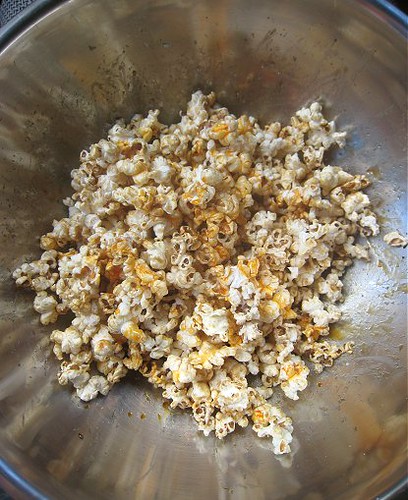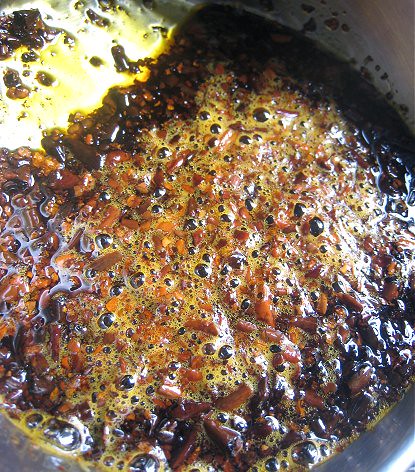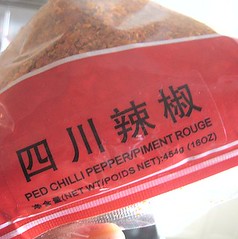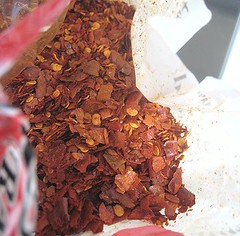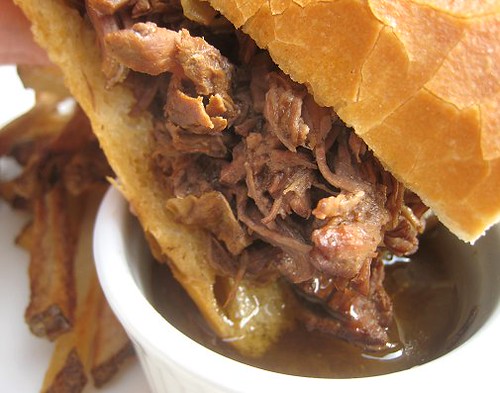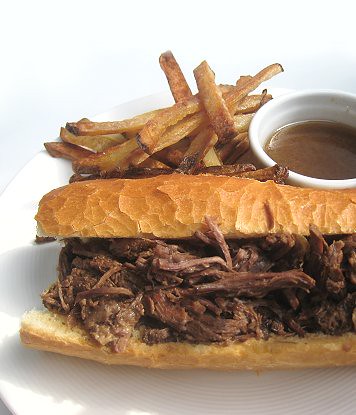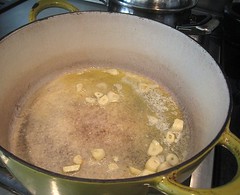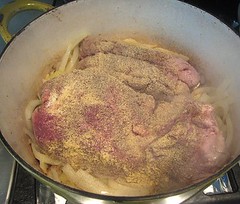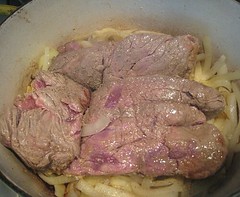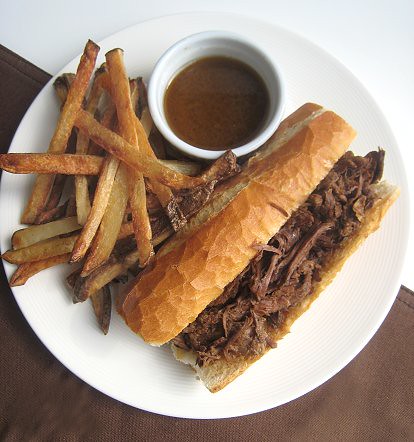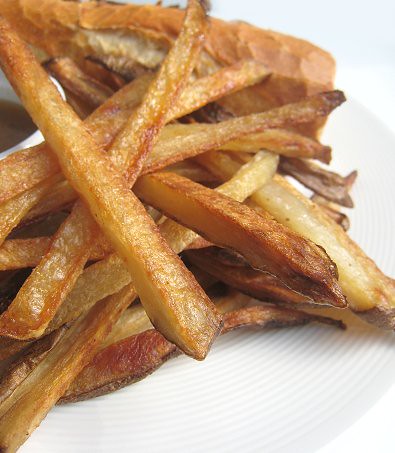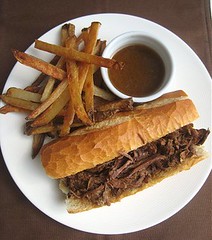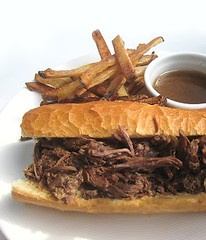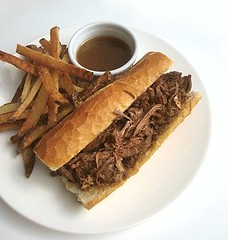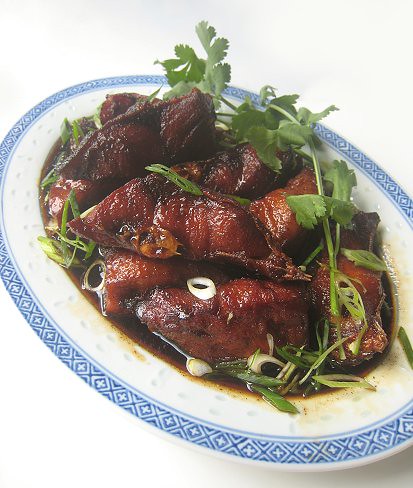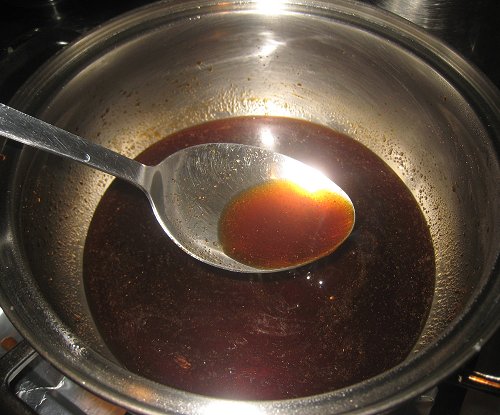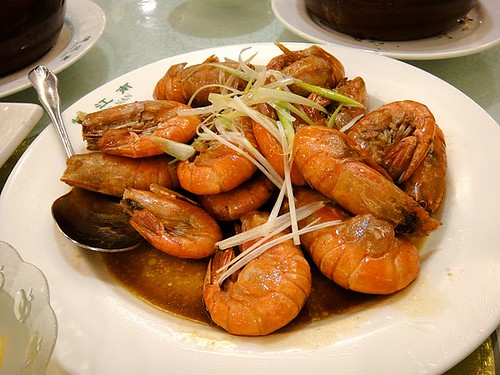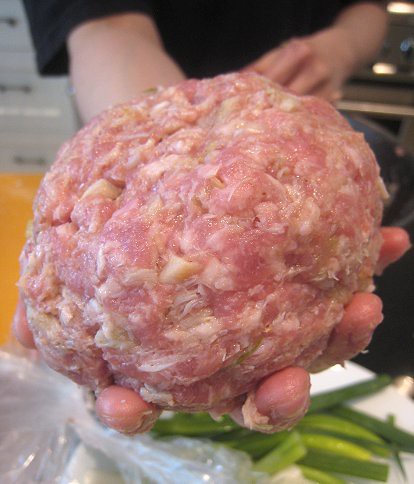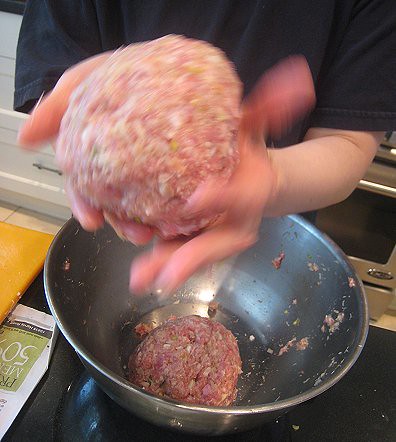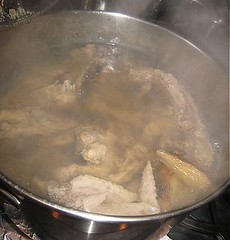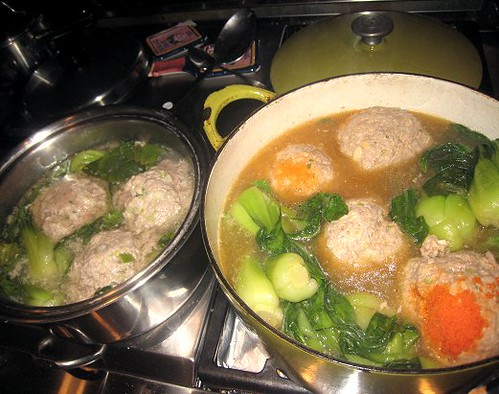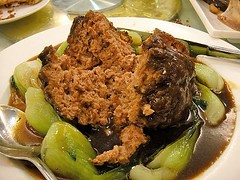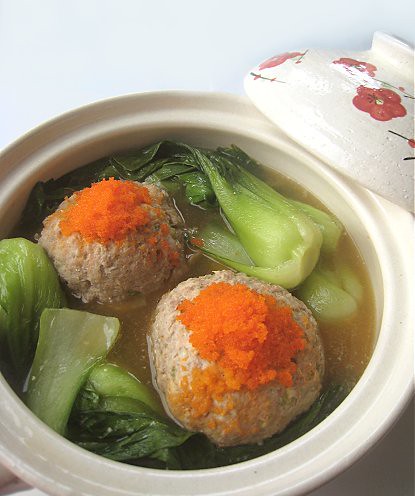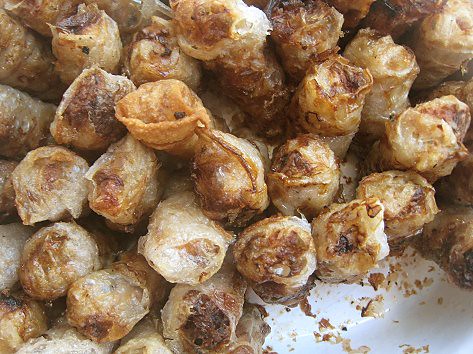
one of these things is not like the others...
JS:
We've talked about the dearth of Vietnamese recipes on this blog before (in our Vietnamese Chicken Cabbage Salad on Sesame Rice Cracker post) as a situation we need to rectify. We love Vietnamese food: we should be making more Vietnamese food at home.
Of course, one of my favourite things to eat at Vietnamese restaurants is cha gio (Vietnamese spring rolls).
I thought it's finally time to tackle cha gio for this month's Regional Recipes. (Scroll to the bottom for Regional Recipes information.)
JS:
As usual, we start off with a lot of ground pork, about 3 pounds' worth. It's because I had three pounds of ground pork in the fridge that day and I wasn't sure what to do with the leftover pork had we decided to make a smaller batch of cha gio.
Besides, I thought -- cha gio? I mean, surely the more we have, the better it is! After all, we can't seem to control ourselves when it comes to food.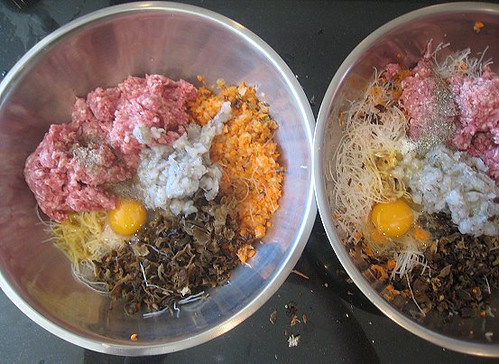
TS:
What goes into the cha gio filling?
There's ground pork, ground shrimp, bean thread noodles, onions, carrots, eggs for binding, then salt, sugar, black pepper and fish sauce for seasoning.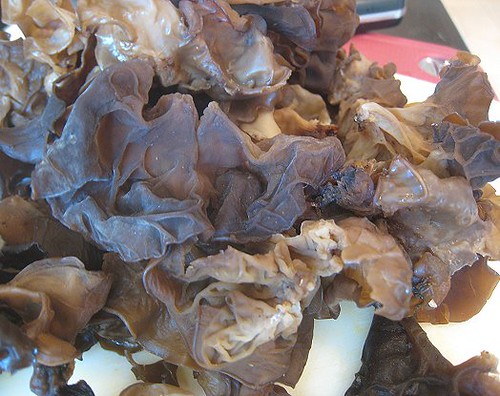
TS:
There's also tree ear fungus!
OK, anytime you hear "fungus", it's not that appealing. So I'll rephrase: there's also tree ear mushrooms! Aren't they pretty? I love tree ear fungus mushrooms.
JS:
Having the pork poundage in my head and having accepted it as a theoretical proposition, I was quite surprised when I saw how much it actually was!
When you add up all the other ingredients, it seemed like my pork has doubled in volume.
Uh-oh.
TS:
Let us remind you of the volume we're dealing with. These are two large bowls of filling!
JS:
I was thinking about to the massive fry job this will entail and I was silently berating myself for being so gung-ho about the cha gio.
I had some rice paper in the pantry and was excited that we were finally going to use it. I've never worked with rice paper before, but I do prefer rice-paper-cha-gio over the spring-roll-wrapper-cha-gios.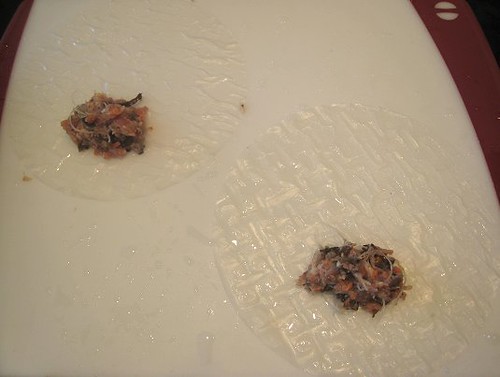
JS:
Well, after this whole exercise is done, it turns out I still would have not worked with rice paper, as TS had to do the whole wrapping on her own.
I took one look at how she wrapped the first one and decided that I, with my less than dexterous fingers, most likely wouldn't make the grade in cha gio wrapping. I had a feeling mine would be all askew and loose -- and while askew might be acceptable, loose is not good.
TS:
My wrapping skills were not really up to par as well, but as is always in our case, I deemed it "good enough". Of course, that didn't stop JS and CSC from "back-seat-wrapping" for me. They would call out instructions like, "Make it tighter!" Or, "Put more filling!" Or, "It's too small!"
Yes, I tried to make my cha gio demure in size, but JS and CSC kept pushing me to put more and more filling in, despite the disastrous consequences that may ensue.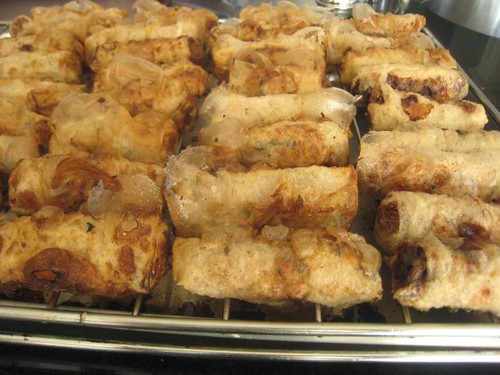
JS:
I let TS do all the wrapping -- CSC helped too -- because after all, I had another task to handle, namely, frying up the cha gio as soon as TS finished rolling them.
The dreaded fry job.
I devised a plan to handle the seemingly millions of cha gio rolling out of their hands.
I figured I'd do a fry-then-bake job as something more safe and something that would save me a bit of time. The plan was to have the rice paper wrapper to come into contact with hot oil for a time, until it's nice, golden, and bubbly, and then it's off to the oven to finish cooking.
TS:
Of course, in our haste and laziness, our cha gio would be rejected from any cha gio beauty contest. Just look at their grotesque selves above!
JS:
I don't know if my method actually saved me time, but it just felt like a saner approach than standing and waiting for each cha gio to finish cooking in the oil.
rolls and rolls and rolls and rolls and rolls
TS:
In our defense, look at the number of cha gio we had to fry up!

cha gio with spring roll wrappers
TS:
We actually had so much filling that we finished two packs of rice paper. Luckily, we happened to have some leftover spring roll wrappers in the fridge, so I set about rolling those too. This time, I fulfilled the fantasy shared by JS and CSC of humongo "cha gio", making these ones very large indeed.
rice paper cha gio, spring roll wrapper cha gio, and wrapper-less meatballs
TS:
Even with the humongo spring rolls, we still had some leftover filling. So, as you can see above, we just made plain ol' meatballs out of them.
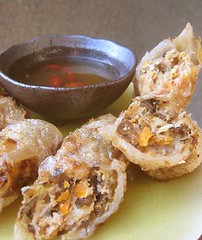
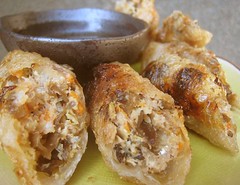
TS:
We made nuoc cham (or more specifically, nuoc mam cham ngot) to serve with these rolls. That's a sauce made with fish sauce, water, sugar and vinegar.
JS:
Despite our execution issues, these cha gio were so good!
TS:
We took the suggestion by Wandering Chopsticks to eat them in the manner of the Southern Vietnamese by wrapping them inside lettuce leaves with some herbs. I definitely prefer them this way now!
In case anyone was wondering about the caption below the first photo, one of these rolls have a spring roll wrapper while the rest are wrapped with rice paper.
Can you spot the spring roll wrapper one?
TS:
Of course, where else would we have gotten the recipes but at Wandering Chopsticks. She has not one, but two, cha gio posts.
Recipes at Wandering Chopsticks
Cha Gio/Nem Ran (Vietnamese Egg/Spring Rolls)
Gluten-Free Cha Gio (Vietnamese Spring/Egg Rolls)
You may also want to make some Nuoc Mam Cham (Vietnamese Fish Dipping Sauce).
Enjoyed this post? Why not subscribe to our blog? Subscribe via reader or subscribe via email. Thank you! |
eatingclub vancouver Regional Recipes posts
Greek Meatball Soup (Giouvarlakia)
Simmered Saba Mackerel with Daikon Radish (Saba Oroshi-ni)
Thai Fried Chicken
Roast Pork Belly with Puy Lentils
Beef "Ribbon" Kebab (Pasanda Kabab) with Cilantro Chutney
Canadian Onion Soup with Oka Cheese
Muffuletta
Börek with Beef Filling
Korean Pork Bulgogi (with Muu Namul, Kong Namul)
Lobster Congee from a Lobster Feast
Pork Jowl (Pork Cheeks) with Brown Sugar Rub
Beef Salpicao
Cuban Arroz con Salchichas (Yellow Rice with Vienna Sausages)
Cuban Pastelitos de Guayaba y Queso (Guava and Cheese Pastries)
Vietnamese Spring Roll (Cha Gio)
Grilled Fish Fillet on Oregano
Pastéli (Greek Sesame Snaps)
 We're submitting this to Regional Recipes, a blogging event created by Darlene of Blazing Hot Wok that celebrates food from all over the world. The torch has since been passed to Joanne of Eats Well with Others.
We're submitting this to Regional Recipes, a blogging event created by Darlene of Blazing Hot Wok that celebrates food from all over the world. The torch has since been passed to Joanne of Eats Well with Others.The region for this edition is Vietnam. The round-up will be hosted at Regional Recipes and will be posted after June 1. Regional Recipes information
Vietnamese food at eatingclub vancouver
Squid with Black Pepper
Trout in Vietnamese Caramel Sauce
Pho Bo (Vietnamese Beef Noodle Soup)
Vietnamese Salmon Steaks with Cucumber, Garlic and Ginger
Pho Ga (Vietnamese Chicken Noodle Soup)
Vietnamese Chicken Cabbage Salad (Goi Ga Bap Cai) on Sesame Rice Cracker (Banh Trang Me)
Vietnamese Spring Roll (Cha Gio)
Asparagus and Crab Egg Crêpes



